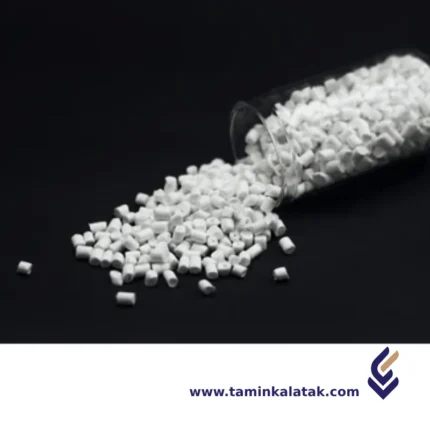White Masterbatch
White Masterbatch is a concentrated mixture of titanium dioxide (TiO₂), a polymer carrier resin, and various additives designed to provide whiteness, brightness, and opacity in plastic products. It is widely used in different plastic manufacturing processes to enhance aesthetic appeal, opacity, and UV resistance.
Structure of White Masterbatch
White masterbatch consists of a high concentration of titanium dioxide (TiO₂) dispersed in a polymer carrier, which imparts opacity, brightness, and whiteness to plastic products. The main component, TiO₂, is uniformly distributed within carrier resins such as polyethylene (PE), polypropylene (PP), polystyrene (PS), or other compatible polymers to ensure even dispersion during processing.
In addition, additives such as dispersing agents, processing aids, and stabilizers may be included to improve pigment dispersion, enhance processability, and increase resistance to heat and UV radiation.
The formulation of white masterbatch is designed to ensure easy handling and consistent color performance, making it an essential component in industries such as packaging, automotive, textiles, and consumer goods.
Key Properties of White Masterbatch
White masterbatch possesses several critical properties that make it ideal for use in the plastics industry:
-
High opacity and brightness due to the presence of titanium dioxide (TiO₂).
-
Excellent whiteness and coverage performance.
-
Uniform color dispersion with no streaking or spotting.
-
Good thermal stability, resistant to degradation during high-temperature processing.
-
Strong UV resistance to prevent discoloration and surface degradation under sunlight.
-
Enhanced mechanical strength and durability of the final product.
-
Moisture resistance and excellent compatibility with various polymer types.
-
Easy to blend and process across different production methods.
Applications of White Masterbatch
-
Packaging materials such as films, bottles, and containers for food, pharmaceuticals, and consumer goods.
-
Automotive components, both interior and exterior plastic parts.
-
Household appliances, furniture, and electronic housings for aesthetic and protective purposes.
-
Textiles and fibers to achieve whiteness and UV protection.
-
Construction materials including PVC pipes, window profiles, and roofing sheets.
-
Agricultural films, mulching sheets, and irrigation pipes.
Advantages of White Masterbatch
-
High opacity and brightness, improving product appearance.
-
Excellent dispersion of TiO₂, preventing streaks or uneven coloration.
-
Increased UV resistance, protecting against color fading and degradation.
-
Enhanced mechanical properties, improving strength and durability.
-
Thermal stability suitable for high-temperature processing.
-
Compatible with a wide range of base polymers for versatile applications.
-
Available in customized formulations tailored to specific industrial needs.
Disadvantages of White Masterbatch
-
High TiO₂ content increases production costs.
-
Possible incompatibility with certain polymers if not properly formulated.
-
Overuse may reduce mechanical strength, causing brittleness.
-
May require additional additives to optimize dispersion and processing performance.
-
Excessive use can increase material consumption and negatively affect environmental goals.
Types of Masterbatch
Black Masterbatch
Contains carbon black and is commonly used in cable, pipe, automotive, and packaging industries. It provides excellent UV resistance, high coverage, and thermal conductivity.
Purple Masterbatch
Used in various industries to achieve specific aesthetic effects by introducing violet tones, often combined with other colors such as yellow or green.
Yellow Masterbatch
Formulated with organic or inorganic pigments for decorative, packaging, household, toy, and industrial applications requiring vibrant coloration.
Green Masterbatch
Similar in use to yellow masterbatch, it is applied in consumer goods, household products, and industrial components.
Blue-White Masterbatch
A white masterbatch with a bluish tint that provides enhanced visual brightness and clarity, ideal for premium packaging and decorative products.
Refrigerator White Masterbatch
Specially formulated for refrigerator and household appliance parts, producing a clean, cool-toned white appearance.
White Masterbatch Price Factors
As many manufacturers know, the price of white masterbatch is a key consideration in industries such as plastics, packaging, household goods, and automotive manufacturing.
While it offers strong opacity, high brightness, and excellent light resistance, the final price depends on several factors:
-
Titanium dioxide concentration and quality.
-
Type of carrier resin used.
-
Level of dispersion and processing technology.
-
Additives for UV, heat, or moisture resistance.
-
Custom formulation and color matching requirements.
-
Global TiO₂ market fluctuations and raw material costs.
Understanding these factors helps manufacturers make informed and cost-effective purchasing decisions while maintaining product quality and performance.







